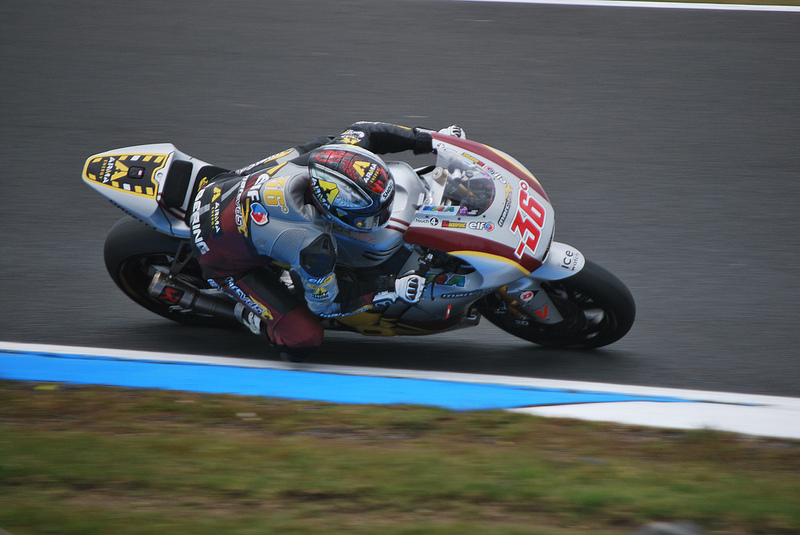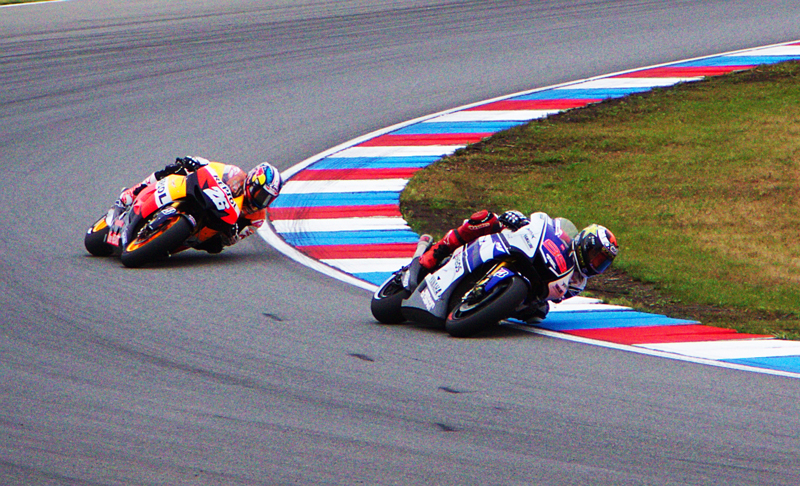Define Your Own Racing Line: There’s No One Size Fits All
Finding the right line is something that is high on the agenda for many learning riders. Whether it be for a particular corner or series of corners, the quest to find the perfect line is rife in any track day paddock.
It’s understandable really. We see riders that are stronger than ourselves in a particular corner, so we try to mimic them in an attempt to get the same result.
And to a degree it works. It shows us the corner from a different point of view and perhaps allows us to go faster, especially if our previous line was nowhere close to the mark.
However, the issue arises when the learning rider assumes the line they’re being shown is the definitive solution, rather than a guideline.
The reality is that there is no one perfect line that works for all riders, bikes and situations. They may be similar, but certainly not identical.
The Differences at the Very Top
At track day level, it’s very easy to spot a wide variety of differing lines. This is mainly due to the wide variety of experience levels present and people doing things how they think they should be done, but this variation isn’t exclusively present in ‘lower’ levels of track riding.
Even when looking right to the very top of the motorcycle racing tree – the MotoGP paddock – we can observe different lines being used.
These differences are even present in the Moto2 and Moto3 classes, with bikes that are very similar from one another.
You would expect these classes in particular to bring about near identical approaches, being that the bikes are near identical in make-up, but the differences can be noted.
In more recent memory, the 2014 season saw two riders with different approaches in the Moto3 paddock. This came from two of the biggest names of the time. Jack Miller and Efren Vazquez.
If you look at the qualifying sessions across the season, there are instances where their lap times are to within one tenth of one another, but when you observe them during a lap their styles and the lines they take can be quite different.
This is most evident at corner entry. Miller takes a much shallower entry line trailing a lot of brakes into the corner, whereas Vazquez runs deeper into the corner with the bike upright, turning later and taking a later apex.
Everyone attributes Efren’s size to the massive speed boost down the straights he has compared to the other Hondas in the paddock, but while that will be a factor, the way his line benefits him at the exit in allowing him to get earlier on the power will play a big part too.
Yet even though their styles can be seen to be different, their lap times are insanely close at times. Bringing to light evidence of differing approaches bringing near identical results.
Moving up to Moto2 the differences are evident once again. In Moto2 the bikes are even more similar than in Moto3, again perhaps giving the idea that the approaches would be just as similar.

But if anyone saw the 2014 race at Sachsenring, they would have seen Mika Kallio and Dominique Aegerter stuck together out in front for the entire race.
The fact they were stuck together for the entirety of the race indicates just how close the lap times were, but in terms of the lines they were taking their approaches were once again very different.
Kallio was opting for a later, wider entry into most corners, whereas Aegerter was able to take and hold very tight lines through almost every corner, carrying a lot more brakes to the apex.
It is those lines that allow them both to get the best out of the bike for that particular situation. And they’ve opted for a setup that allows them to ride that way.
If you had asked each rider to try to emulate the other’s lines, you would more than likely begin to see the lap times increasing.
Going up another step into MotoGP you don’t even have to pick two different riders, but two different bikes.
Jorge Lorenzo had been struggling with edge grip (among other things) early in the 2014 season because of the then new Bridgestone tyres, hence his pretty lacklustre start to the season.
But the Hondas were using the same tyre, so it must just be him, right?
The trouble is, the M1 Yamaha has been designed around the principle of carrying a lot of lean angle and higher corner speeds for longer periods, whereas the Honda is designed more for the stop it, square it off, stand it up and shoot it out approach.

This means that the two bikes take different lines not because of the riders onboard, but because the bikes have actually been designed that way!
The lines are dictated by the strengths of the bike, just how in the lower categories they are dictated by the strengths of the rider and their subsequent bike setup.
While there’s no doubt they could still run fast lap times, if Dani Pedrosa tried to ride the Honda like a Yamaha and Jorge Lorenzo the Yamaha like a Honda, they each wouldn’t get as good a result as they could.
This is also evident in Cal Crutchlow’s comments early in the 2015 season having switched to a Honda. Having previously ridden the M1 Yamaha and the GP14 Ducati, in early 2015 we witnessed him commenting how he needs to ‘learn’ how to ride the Honda.
It’s ridden differently to make use of the bike’s strengths, therefore the lines that he’s taking will be different too.
Again, this is yet another indicator that there is no one optimum line for every bike and rider combination.
The line effectively becomes a by-product of the rider achieving maximum potential for themselves and the bike.
Bring It Into the Context of Your Ability
Now, when we get to elite levels the different styles are a necessity as they hunt to find every possible advantage, but at track day level you can be pretty sure that most riders will be looking to ride in a similar way. Not just across different manufactures, but even across different capacity or styles of bike.
The main reason for pointing out the differences at the highest level is just to show you that there is no perfect universal line, only a perfect line for you (though even that will evolve as you get faster).
A point I consistently bring up inside of my Track Rider Training program is that the best line is the one that allows us to do our job properly and navigate a corner using correct technique.
As a track day riders climbing the ranks, it’s obvious that you’re going to want to achieve the speed that the faster guys are achieving.
To a degree, this means learning from them, but it should always fall into context of your own approach, skill, what you know to be true fundamentally, and what you’re actually capable of achieving.
No two riders see two corners the same. So copying another rider should be taken as a learning exercise, not the clear cut definitive solution.
Photos by Andrew Napier / দেবর্ষি রায়
Related Posts
How to Deal With the Panic When Someone Takes Your Line
How to Get the Most from Your Track Time: Pre-Ride Prep & How to Approach Your Day
Learning to Trust Your Tyres Through Technique & Experience
Using Other Riders to Gauge Your Speed and Uncover Weaknesses
